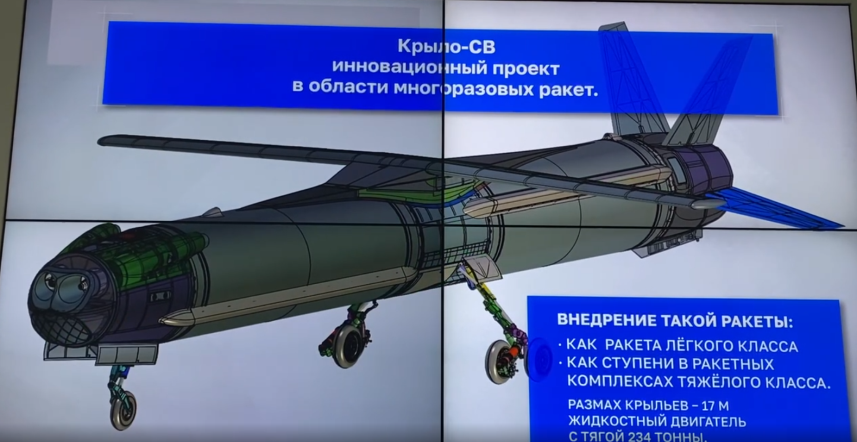tequilashooter
ACCESS: Top Secret
- Joined
- 1 January 2021
- Messages
- 699
- Reaction score
- 895

Прототип многоразовой ступени "Крыло-СВ" создадут в конце 2022 года
Глава Роскосмоса Дмитрий Рогозин отметил, что России не подходит технология, которую использует компания SpaceX
The prototype of the reusable cruise stage of the Krylo-SV light class rocket will be created at the end of 2022, Roscosmos head Dmitry Rogozin said on Monday at a press conference within the framework of the 72nd International Astronautical Congress in Dubai.
"This project is called Krylo-SV. We plan to create a prototype of this device at the end of next year," Rogozin said.
He noted that Russia is not suitable for the technology used by SpaceX. "According to ballistic calculations, if we start from the Vostochny cosmodrome, the landing site of the missile blocks is the border of the Sea of Okhotsk and our Far Eastern coast, the Khabarovsk Territory. This zone is completely uninhabited, and the place to pick up our missile module seems extremely difficult," he explained.
The out-of-project of the Krylo-SV return stage was prepared and protected at the Foundation for Advanced Studies (PIF) on May 29, 2019. The development was carried out by the V. M. Myasishchev Design Bureau. In the journal of the United Aircraft Corporation "Horizon" it was specified that after the release of the rocket to a given height, the project involves the opening of the wing and the inclusion of the jet engine. This will allow you to return the first stage.
In the U.S., there are currently returnable stages in SpaceX's Falcon rockets, and blue Origin's New Shepard rocket. Reusable missiles are also being developed in China and Europe.

